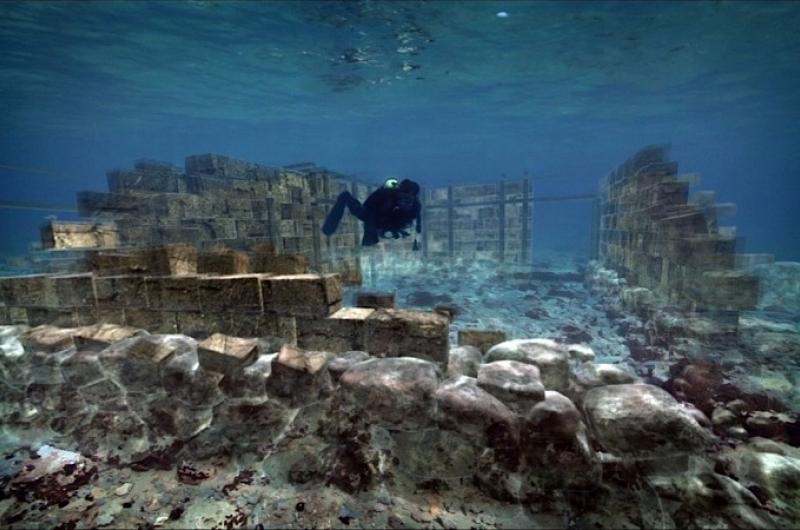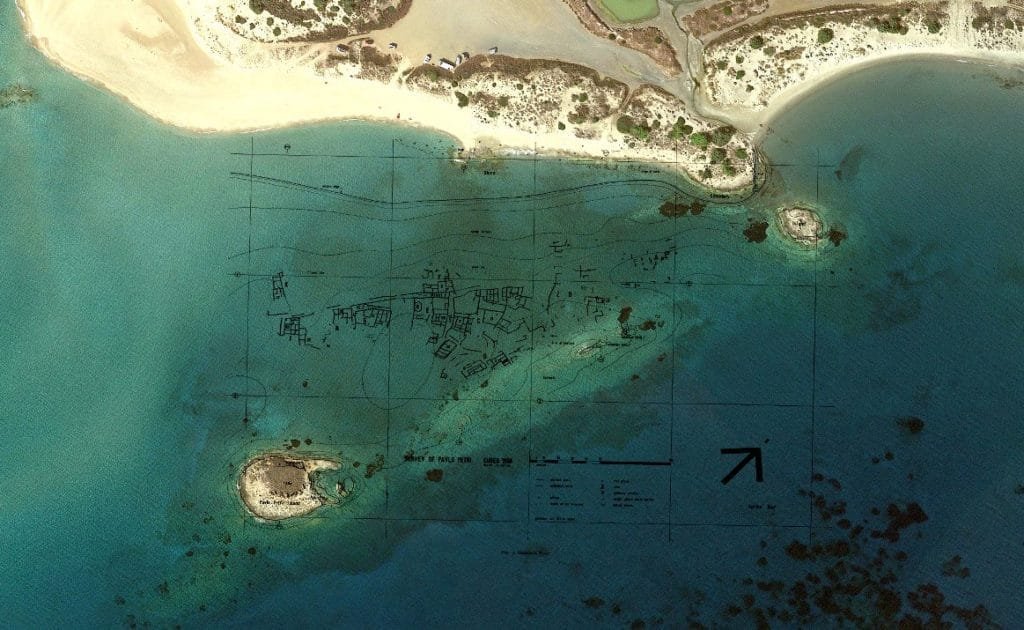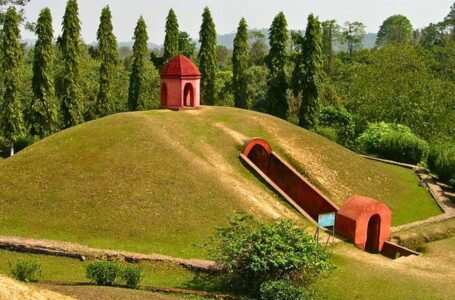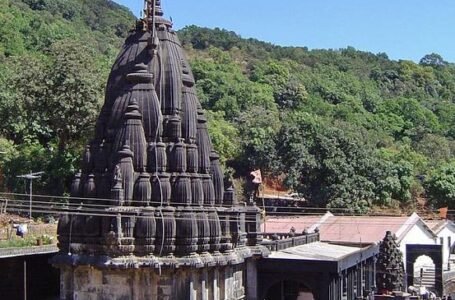The Long-Lost City of Pavlopetri: A Glimpse Into Greek Life
- Ancient history European history Medieval history mythology
 Shweta Toppo
Shweta Toppo- January 20, 2023
- 0
- 394

Pavlopetri is one of the most well-preserved underwater archaeological sites in the world. The city was founded in the Late Bronze Age, around 1200 BCE. It is thought to have been lost to the sea soon after its foundation, around 1000 BCE. Pavlopetri was rediscovered in 2004 by a team of divers. Since then, extensive excavations have been carried out, revealing a wealth of information about the city and its inhabitants. The city was located in the southern Peloponnese, in an area known as Laconia. It was situated on the shore of the Laconian Gulf, with a population of around 1,000 people. The city was divided into four quarters, each with its marketplace and temples. One of the most notable features of Pavlopetri is its extensive network of streets and public buildings. The city’s dwellings were built of stone and mud brick, with thatched roofs. They were typically two or three stories high, with rooms arranged around a central courtyard. The city was surrounded by a defensive wall, with a gatehouse and a port. A series of dams and canals were built to protect the city from flooding.

The inhabitants of Pavlopetri were primarily engaged in farming, fishing, and trade. They also produced pottery, jewellery, and other craft goods. The city was ruled by a monarchy, with a king and queen presiding over a council of nobles. The city’s decline began in the 9th century BCE when it was raided by the Dorians. It is thought that the city was finally abandoned around 700 BCE. The city’s demise was likely due to several factors, including economic decline, environmental disasters, and political upheaval. The city of Pavlopetri was rediscovered in 1967 by Nicholaos Kontopoulos. It is thought to have been lost to the sea soon after its foundation, around 1000 BCE. The site of Pavlopetri was rediscovered in 2004 by a team of divers. Since then, extensive excavations have been carried out, revealing a wealth of information about the city and its inhabitants.

Pavlopetri is one of the most well-preserved underwater archaeological sites in the world. The city was founded in the Late Bronze Age, around 1200 BCE. It is thought to have been lost to the sea soon after its foundation, around 1000 BCE.Pavlopetri was rediscovered in 2004 by a team of divers. Since then, extensive excavations have been carried out, revealing a wealth of information about the city and its inhabitants.The city was located in the southern Peloponnese, in an area known as Laconia. It was situated on the shore of the Laconian Gulf, with a population of around 1,000 people.The city was divided into four quarters, each with its marketplace and temples. One of the most notable features of Pavlopetri is its extensive network of streets and public buildings.The city’s dwellings were built of stone and mud brick, with thatched roofs.

They were typically two or three stories high, with rooms arranged around a central courtyard. The city was surrounded by a defensive wall, with a gatehouse and a port. A series of dams and canals were built to protect the city from flooding. The inhabitants of Pavlopetri were primarily engaged in farming, fishing, and trade. They also produced pottery, jewellery, and other craft goods. The city was ruled by a monarchy, with a king and queen presiding over a council of nobles. The city’s decline began in the 9th century BCE when it was raided by the Dorians. It is thought that the city was finally abandoned around 700 BCE. The city’s demise was likely due to several factors, including economic decline, environmental disasters, and political upheaval.

The Significance of Pavlopetri:
Pavlopetri is one of the most important archaeological discoveries of the past century. This long-lost city offers a unique glimpse into the everyday life of the ancient Greeks.
Pavlopetri is the oldest known underwater city in the world. The city’s extensive remains offer a rare insight into the architecture, economy, and social structure of the Bronze Age Greek world. The city’s rediscovery has also shed new light on the trade networks of the ancient Mediterranean. Pavlopetri’s location on the shore of the Laconian Gulf made it an ideal gateway for trade between the Aegean and the Peloponnese. Pavlopetri is also significant for its potential to provide information about the impacts of climate change on human populations. The city’s decline and eventual abandonment are thought to have been caused by rising sea levels and flooding. The study of Pavlopetri is ongoing, and the city is sure to continue to reveal new and exciting information about the ancient world.

What Life Was Like in Pavlopetri:
Pavlopetri was a bustling city of around 1,000 people. The city was divided into four quarters, each with its marketplace and temples. One of the most notable features of Pavlopetri is its extensive network of streets and public buildings. The city’s dwellings were built of stone and mud brick, with thatched roofs. They were typically two or three stories high, with rooms arranged around a central courtyard. The city was surrounded by a defensive wall, with a gatehouse and a port. A series of dams and canals were built to protect the city from flooding.

The city’s inhabitants what we know about Pavlopetri:
Pavlopetri is one of the most well-preserved archaeological sites from the ancient Greek world. The city was founded in the Late Bronze Age, around 1200 BCE. It was thought to have been lost to the sea soon after its foundation, around 1000 BCE. Extensive excavations have revealed a wealth of information about the city and its inhabitants. The city was found to have a complex system of streets and plazas. It is also thought to have had port and defensive walls. The unearthed remains of houses and other structures offer a unique glimpse into the everyday life of the ancient Greeks. The city was home to a variety of different craftsmen, including potters, weavers, and metalworkers. The artefacts found at the site provide insights into the religious beliefs of the people of Pavlopetri. Several temples and shrines have been uncovered, dedicated to various gods and goddesses.

The significance of Pavlopetri:
Pavlopetri is a significant archaeological site for several reasons. It is one of the oldest known underwater cities. It is also one of the best-preserved examples of an ancient Greek city. Pavlopetri provides an invaluable resource for understanding the everyday life of the ancient Greeks. The city’s well-preserved remains offer insights into a variety of aspects of Greek life, from religion to architecture to craftsmanship. Pavlopetri is also significant for its connection to the myth of the lost city of Atlantis. The city’s sudden demise around 1000 BCE has led some to believe that it is the long-lost city mentioned in Plato’s dialogues.
What life was like in Pavlopetri:
Pavlopetri was a bustling city with a complex system of streets and plazas. The city was home to a variety of different craftsmen, including potters, weavers, and metalworkers. The unearthed remains of houses and other structures offer a unique glimpse into the everyday life of the ancient Greeks. The city was also home to several temples and shrines, dedicated to various gods and goddesses. The city’s sudden demise around 1000 BCE has left us with many unanswered questions about the lives of its inhabitants. However, the wealth of information that has been uncovered is sure to provide insights into this fascinating ancient Greek city.
The city’s demise:
The city of Pavlopetri is believed to have been lost to the sea around 1000 BCE. The exact cause of the city’s demise is unknown, but it is thought to have been due to a combination of natural and human factors. Pavlopetri was situated in a naturally unstable area, and it is thought that the city was gradually eroded by the sea. The construction of the city’s defensive walls may have also contributed to its eventual downfall. The city’s inhabitants would have been aware of the danger posed by the sea. It is thought that they may have abandoned the city in an attempt to save themselves.
The city’s rediscovery:
The city of Pavlopetri was rediscovered in 2004 by a team of divers. The site had been buried beneath the sea for over 3,000 years.
Since its rediscovery, the site has been extensively excavated. The excavations have revealed a wealth of information about the city and its inhabitants. The city’s rediscovery has also led to a new understanding of the lives of the ancient Greeks. The well-preserved remains of the city offer insights into a variety of aspects of Greek life, from religion to architecture to craftsmanship.

Conclusion:
Pavlopetri is one of the most fascinating archaeological sites of the past century. This long-lost city offers a unique glimpse into the everyday life of the ancient Greeks. Pavlopetri is a significant archaeological site for several reasons. It is one of the oldest known underwater cities. It is also one of the best-preserved examples of an ancient Greek city. Pavlopetri provides an invaluable resource for understanding the everyday life of the ancient Greeks. The city’s well-preserved remains offer insights into a variety of aspects of Greek life, from religion to architecture to craftsmanship. Pavlopetri is an ancient city that was founded in the Late Bronze Age, around 1200 BCE. The city was lost to the sea soon after its foundation, around 1000 BCE. The site of Pavlopetri was rediscovered in 2004 by a team of divers. Since then, extensive excavations have been carried out, revealing a wealth of information about the city and its inhabitants.


